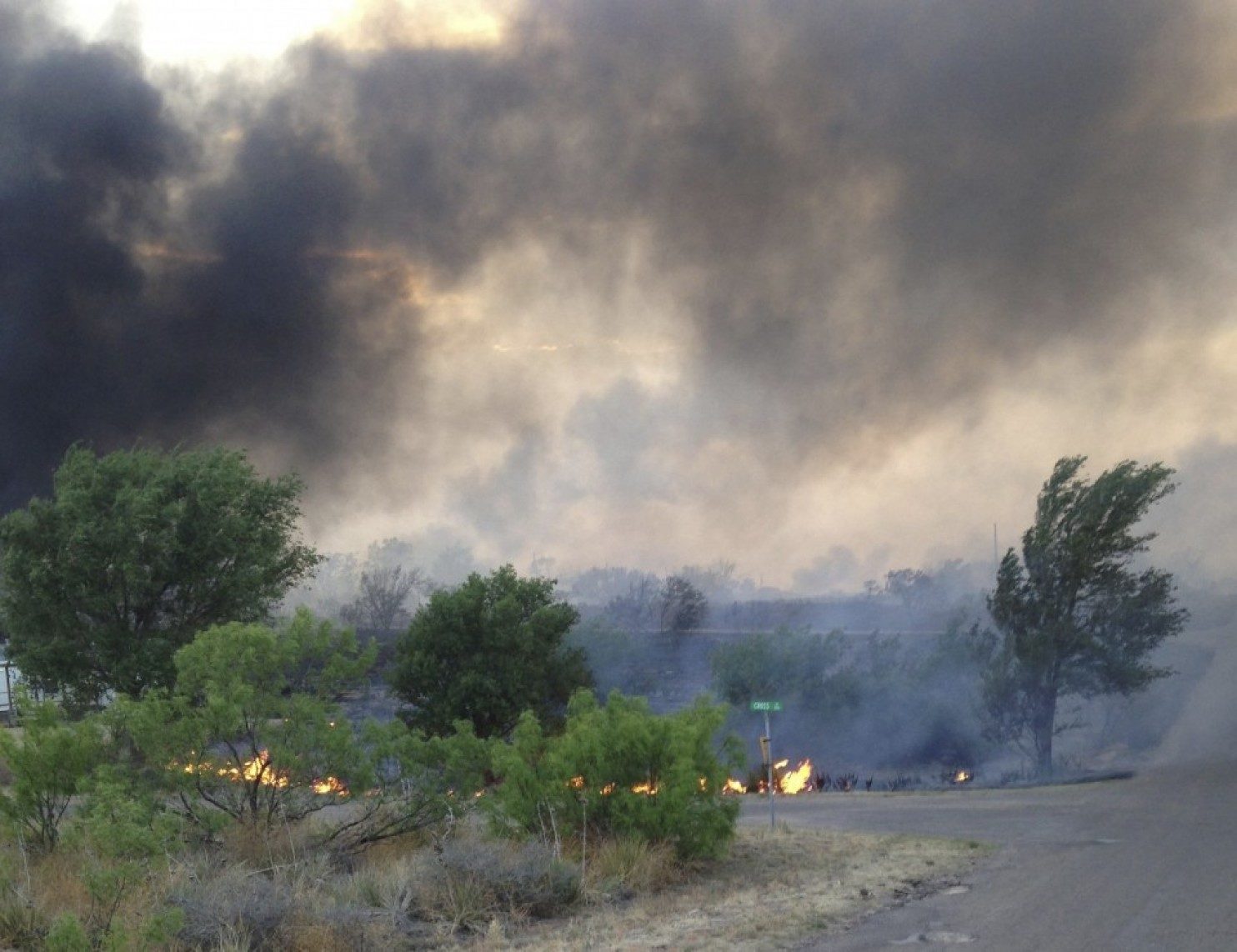
The new study, published in the journal Geophysical Research Letters, found that the average number of large Great Plains wildfires each year grew from about 33 to 117 over that time period, even as the area of land burned in these wildfires increased by 400 percent.
"This is undocumented and unexpected for this region," said Victoria Donovan, the lead author of the study and a researcher at the University of Nebraska at Lincoln. "Most studies do document these shifts in large wildfires in forested areas, and this is one of the first that documents a shift, at this scale, in an area characterized as a grassland."
Donovan published the study with two university colleagues. The research looked at large wildfires, defined as fires around 1,000 acres or more in size.
In other parts of the globe, such as Africa's savannas, grassland fires are extremely common — and that used to be true for the Great Plains as well. But in the past century or more, Donovan explained, wildfire suppression techniques — such as rapidly catching fires and putting them out — had largely eradicated them from the region.
However, they've begun to come back, a trend that has been consistent with not only climate change but also an incursion of more invasive plant species that could be providing additional fuel, Donovan said. However, the study merely documented the trend toward increased large wildfires, without formally attributing its cause.
2011 saw a particularly large surge of Great Plains wildfires, which accounted for half of the total acreage burned in the United States that year.
By specific region, some of the largest wildfire increases occurred in the Cross Timbers region of Texas and Oklahoma (which saw a 2,200 percent increase in the total area burned), the Edwards Plateau of Texas (a 3,300 percent increase), and the Central Irregular Plains, encompassing parts of Iowa and northern Missouri, as well as parts of Kansas and Oklahoma (1,400 percent increase).
Guido van der Werf, a scientist at VU Amsterdam who studies global forest fires and was not involved with the current study, said it was difficult to attribute causes behind the recent uptick in burning.
"These grassland fires are somewhat different than the forest fires we are probably more used to, and follow-up research is needed to better understand what the drivers of the upward trends were," he said by email. "Agricultural abandonment could be one, wetter conditions later in the record another one (leading to higher and more continuous fuel beds), climate change leading to warmer temperatures, etc."
Van der Werf said that in Africa, grassland fires have actually declined as more land has been converted to agricultural use. "Interesting to see that in other areas with other stages of development opposite trends are found," he said.
Max Moritz, a wildfire researcher at the University of California at Berkeley, who also was not involved in the study, said the new results are consistent with other work. But he added that he suspects that they reflect not so much human-caused climate change, but rather, changing human behavior.
In particular, he cited a study from earlier this year led by Jennifer Balch of the University of Colorado at Boulder, which found that humans were overwhelmingly responsible for lighting U.S. wildfires over the past 20 years (presumably mostly by accident).
Comment: Lightning strength and frequency is increasing which may play a much more significant role in igniting wildfires than the study indicates.
"Balch et al (2017) show the Great Plains to have increasing patterns of both lightning- and human-caused fires over this period; yet the vast majority here are caused by humans," he said by email. "This suggests that the trends in question may largely be due to shifts in the amount, type, and timing of human activities." For some time, wildfire researchers have worried about the growth of what they call the "wildland-urban interface," in which more and more people are living in proximity to areas conducive to burning.
Added Moritz:
None of this should downplay the importance of dealing with anthropogenic climate change! However, it does highlight the importance of human ignitions and where/how we build our communities on the landscape. Wildfire is not going away anytime soon. We must learn, as a society, to coexist with wildfire.Indeed, if the climate is changing in a way that increases the risk of wildfires, even as blundering humans are venturing more and more into areas where they might accidentally light them, then the two phenomena could compound each other.
Thus, it seems pretty complex to isolate the cause of the strong upsurge of plains wildfires in the United States. But whatever the cause, Donovan said, the Great Plains region isn't used to wildfires, and that's the real problem. Wildfire authorities tend to invest their resources out west.
Indeed, the cost of fighting wildfires in the United States has already exploded, leading to the practice of "fire borrowing," in which the U.S. Forest Service pulls resources from other programs because it has to use them to fight fires.
"This shift could potentially strain wildfire management resources in the future," Donovan said.



Comment: Another factor for this sharp increase could be outgassing, possibly 'sparked' by an increase in atmospheric electric discharge events, such as lightning strikes and other 'cosmic' ignition sources?
Last year a rare winter wildfire ignited in Alaska, despite a foot of snow on the ground and forest fires broke out in Switzerland (in the dead of winter!)